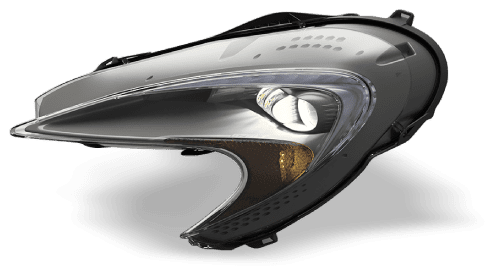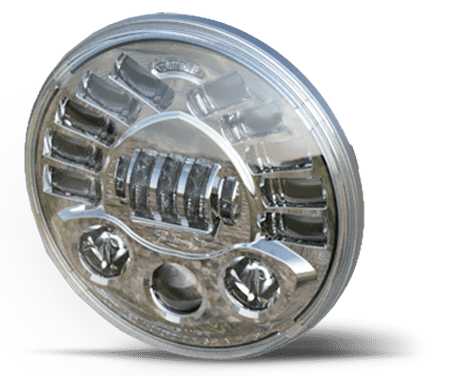
The Importance of Properly Aimed Headlights for Road Safety

When drivers think about road safety, the checklist typically includes buckling seat belts, avoiding distractions, and keeping their eyes on the road. Another important aspect is headlight alignment.
Properly aimed headlights ensure that you see clearly during nighttime or poor weather conditions while preventing glare for oncoming drivers. These factors contribute to accident prevention and driving efficiency.
Explore our guide below to learn the importance of properly aimed headlights for road safety. Whether you are an experienced driver or a new one, understanding this fundamental aspect of vehicle maintenance can make the roads safer for everyone.
Why Headlight Aim Matters for Driver Safety
Headlight orientation plays a pivotal role in road visibility. Properly aligned headlights project light in the direction most useful for nighttime driving or inclement weather. This enables you to detect and avoid hazards, such as sharp curves, obstacles, or pedestrians. Alignment also minimizes glare for other drivers. Misaligned headlights, particularly those aimed too high, can distract or temporarily hinder visibility for oncoming traffic.
This creates a ripple effect of unsafe conditions, as other drivers struggle to see the road. It’s important to aim headlights in a way that doesn’t impair anyone else’s visibility. At J.W. Speaker, our LED headlights provide vehicles with an energy-efficient and high-quality beam to illuminate objects. Once you have high-quality headlights, alignment is key to experiencing the full potential of your lights.
Poorly aimed headlights can reduce their effectiveness. For instance, lights aimed too low may fail to illuminate distant road features like signs or hazards. On the flip side, askew lights may disperse too much illumination away from the road, wasting their potential. This ensures your headlights operate as they should.

Hazards of Poorly Aimed Headlights: Risks and Consequences
The consequences of poorly aimed headlights can be more severe than most people realize. One risk is a lack of visibility during low-light conditions. For example, if your headlights are pointing too low, their range will be restricted, leaving portions of the road ahead in darkness. This can reduce your ability to react to road conditions or obstacles, especially when driving at high speeds.
Another issue is the risk to oncoming traffic. Headlights aimed too high can produce excessive glare. This glare causes temporary visual impairment for other drivers, increasing the likelihood of head-on collisions.
Facing a high-beam glare can reduce reaction times, making it crucial for drivers to check headlight alignment. Improper headlight alignment can also violate vehicle safety regulations. Many regions have laws regarding headlight aim and beam height, and failing to comply with these regulations can result in fines.
How To Identify Misaligned Headlights
Recognizing the signs of misaligned headlights is the first step toward correcting the issue. The most apparent indicator is uneven or inconsistent beam patterns when driving at night. For instance, if one headlight seems brighter or aimed at a different angle than the other, the alignment is likely off. You might also notice that your headlights fail to illuminate road signs effectively or appear to “cut off” abruptly, leaving parts of the road in shadow.
To get a clearer picture, test your headlights against a flat wall in a dark environment. Park your vehicle on level ground about 15–25 feet from a wall, then turn on the headlights. Look for symmetrical beam patterns that are level with each other. If one is higher or more skewed than the other, it’s time for realignment.

Aligning All Vehicle Lights for Optimal Safety
Recognizing the importance of properly aimed headlights for road safety is only the first step; you should install all your lights correctly for optimal illumination. It’s equally important to align additional lights on your vehicle, such as light bars, fog lights, or work lights. Misaligned auxiliary lights can compromise the safety of everyone on the road by causing excessive glare, distracting other drivers, and reducing visibility.
To align your lights, start by confirming that each light is securely mounted and positioned according to the manufacturer’s guidelines. Park on a level surface, and project the beam onto a wall to verify that the lights are aligned and do not exceed recommended angles. Pay special attention to avoiding overlapping beams that can create blind spots or overly concentrated areas of illumination.
Taking this comprehensive approach to light alignment enhances your driving experience and minimizes risks so that your vehicle provides optimal visibility without endangering others. Whether you are driving on busy highways or navigating rural trails, coordinated lighting is key to safe and effective vehicle operation.
Aiming Your Headlights
While professional services are always a reliable option for headlight alignment, you can tackle the task yourself with basic tools. Begin by parking on level ground facing a flat wall or garage door approximately 25 feet from the surface. Then, locate the headlight adjustment screws, which are usually near the headlight housing. Refer to your owner’s manual to identify these screws, and adjust them as needed.
Start with the vertical alignment by ensuring the beam’s center sits at or just below the height of your vehicle’s headlights. Then, adjust the horizontal aim so that the beams align accurately. Always test your adjustments on a dark road to confirm accuracy before finalizing the alignment.
Make small adjustments, work on level ground, and double-check your measurements to avoid over-correcting. Properly aimed headlights not only improve your visibility but also prevent glare for others on the road.
Prioritizing Headlight Maintenance for Safer Roads
Headlight alignment greatly affects road safety. Properly aimed headlights enhance visibility, mitigate glare, and reduce the risk of accidents, making them a critical aspect of vehicle maintenance. Ignoring headlight alignment not only compromises your safety but also affects other drivers on the road. By regularly checking and maintaining your headlights, you contribute to a safer, more cooperative driving environment.
Optimize your vehicle lighting if you want to experience safer, more confident driving in all conditions. Don’t wait until visibility issues compromise your safety! Take action now by inspecting your lighting system or consulting a professional to make adjustments.


